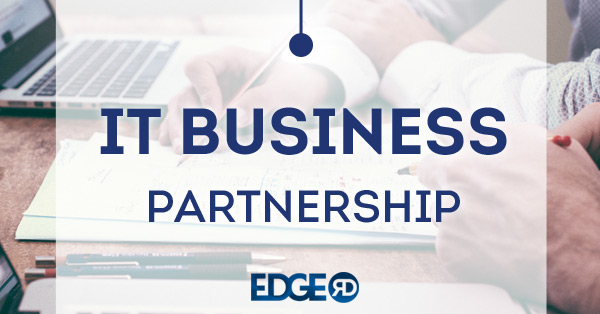Far too often in my professional career I have witnessed organizations who, without realizing, stockpile the newest software solutions coined as the next "smoking gun" to solve their business problems. Software tools pile up over time; costs of support and maintenance pile up, too. Different levels of business make different purchases, and before they know it, users are trying to solve problems across the organization using different tools while adding to the web of disparate systems.
Rapid development of business technology creates for many unnecessary costs when IT and Business operate as separate entities. These two groups that really should be acting together often don’t because, in the most general sense, business holds an underlying belief that IT is not strong on delivering. Equally damaging is the general belief of IT that business has unrealistic expectations. The result? IT doesn’t trust Business and vice versa. They both end up causing themselves and the organization frustration and costly mistakes.
How can the Business and IT build trust that lasts?
Certainly, there are a number of ways to bridge IT & Business, but at Edge R&D we have witnessed success by implementing basic practice.
Business success depends on a tightly integrated IT & Business partnership that is driven from the same corporate goals and mission. Business and IT teams need to continually collaborate to understand each other’s roles and perspectives, leading to an increase of trust while reducing frustrations and costly mistakes.
Rapid development of business technology creates for many unnecessary costs when IT and Business operate as separate entities. These two groups that really should be acting together often don’t because, in the most general sense, business holds an underlying belief that IT is not strong on delivering. Equally damaging is the general belief of IT that business has unrealistic expectations. The result? IT doesn’t trust Business and vice versa. They both end up causing themselves and the organization frustration and costly mistakes.
How can the Business and IT build trust that lasts?
- Alignment - Both sides must accept common corporate goals and adhere to a common corporate direction.
- Develop Perspective – Often, Business and IT professionals work from two very different places. Unfortunately, neither Business nor IT have an adequate understanding of how each other works. Desire to gain an in-depth perspective of what others do is imperative.
- Communicate Effectively – Developing effective lines of open communication that both sides understand and appreciate.
- Uphold Commitments – Simply, Business and IT function separately but not independently. Both groups understand and accept challenges, agree on a path forward, and make a commitment. Both sides do everything in their power to honor the commitment.
Certainly, there are a number of ways to bridge IT & Business, but at Edge R&D we have witnessed success by implementing basic practice.
- Develop Hybrid Teams (Alignment) - Heavily recruit & train IT talented individuals with strong business backgrounds or who have an openness and desire to learn more about business, not just those with strong development skills who have preferred to work independently. Find resources who are strong in both fields can be challenging, so recruiting must stem from commitment to finding well rounded individuals.
- Embed IT Resources within the Business (Perspective & Communication) – Model for the IT people the way to become ambassadors of the program and teach them to partner with business team members. During this modelling process, team members learn everything possible about what the business users are doing and why. Through observation, conversation and hands on assistance, the IT team gains invaluable perspective about the business and their challenges. The embedded IT resources will represent all disciplines of IT, including Architects, Developers, Business Analysts, QA, etc. Gaining an in-depth business perspective builds trust with the business and brings perspective into technical solutions.
- Define Development Cadence and Deliver on Commitments - Incremental delivery through agile practices however others can work effectively as well. What is important is once you establish a pattern of delivery on commitments the trust factor immediately begins to rise with the business and everything else begins to becomes much simpler.
Business success depends on a tightly integrated IT & Business partnership that is driven from the same corporate goals and mission. Business and IT teams need to continually collaborate to understand each other’s roles and perspectives, leading to an increase of trust while reducing frustrations and costly mistakes.

